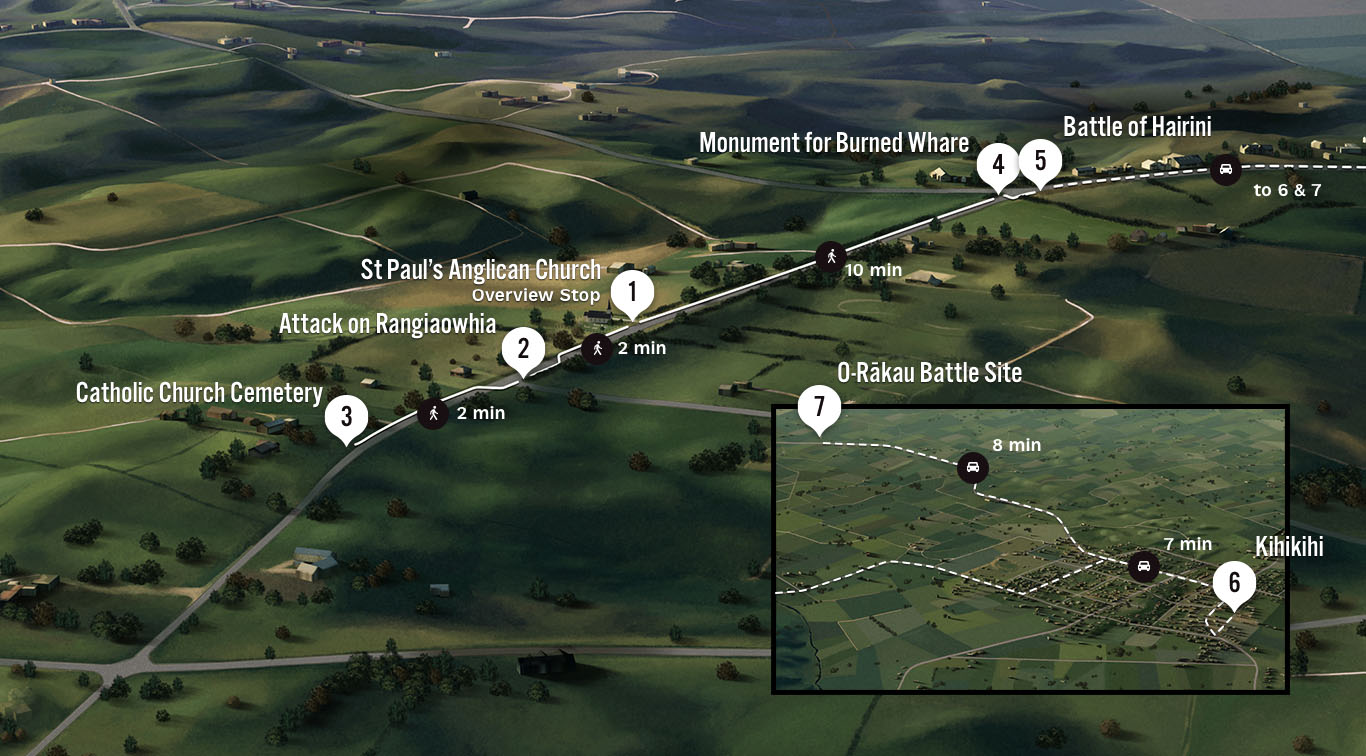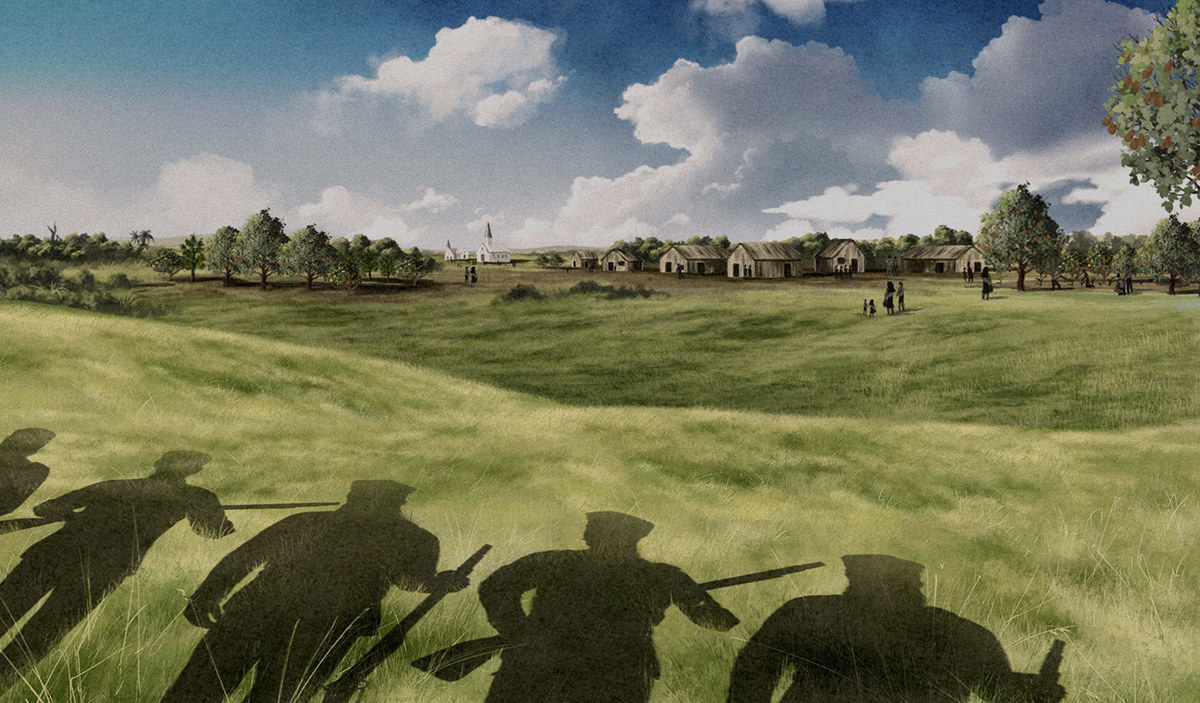Overview
Tirohanga whānui

This tour begins on Rangiaowhia Rd, a 10 minute drive from Te Awamutu. A village named Rangiaowhia once thrived here. From the 1830s Māori and invited European settlers worked collaboratively to develop this into one of New Zealand’s most important agricultural areas. These relationships changed forever during the New Zealand Land Wars. In February 1864 British Crown forces invaded Rangiaowhia. Next, the soldiers fought defenders of the Kīngitanga (Māori King movement) at Hairini and O‑Rākau. Journey with us to significant battle sites and to the historic town of Kihikihi. Learn what took place here and about life before the war.
Ka tīmata tēnei haerenga i te rori o Rangiaowhia, 10 meneti te roa o te taraiwa i Te Awamutu. I ngā wā o mua i tū tētehi kāinga tōnui i konei, ko Rangiaowhia te ingoa. Nō ngā tau o te tekau tau 1830 i mahi tahi te Māori me ngā Pākehā i pōwhiritia ki konei ki te whakarite i tēnei wāhi hei wāhi ahuwhenua matua i Aotearoa. I rerekē ēnei hononga i muri mai i ngā Pakanga Whenua o Aotearoa. I te marama o Rūhīterangi, i te tau 1864, i urutomo ngā hōia Pākehā a te Karauna ki roto o Rangiaowhia. I muri mai, ka whawhai ngā hōia ki ngā kaiwawao i te Kīngitanga i Hairini me O-Rākau. Hoake tātou ki ngā wāhi pakanga nui me te tāone o Kihikihi ki te ako i ngā mahi i puta i konei me te āhua o te ao i konei i mua i te pakanga.




